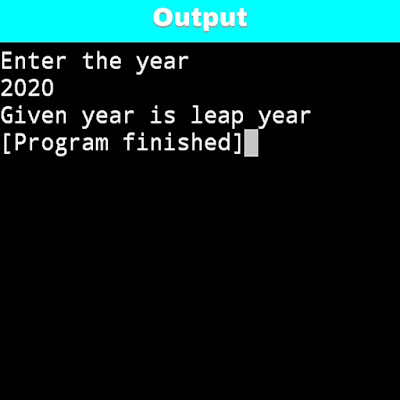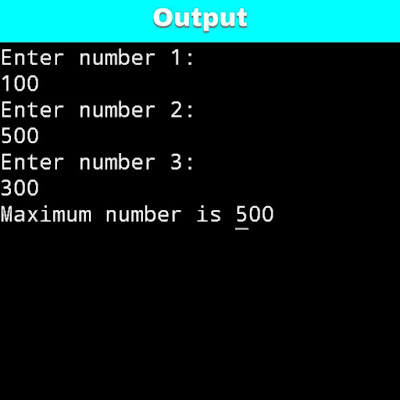Ex: Write a C program to check given year is leap year or common year. How to write a C program to check given year is leap or not. C program to check given year is leap year or common year.
We all know in the regular year has 365 days. But in the leap year one day has extra. means leap year has 366 days.
Input from user:
Enter the year: 2020
Expected output:
Given year is leap year.
1. Firstly get input year from user. variable say year.
2. After that use if-else statement to check given condition if(year%400==0) or(year%4==0 and year%100!=0).
3. If above conditions are true then print given year is leap year.
4. Otherwise we print given year is common year.
#include<stdio.h>
int main()
{
int year;
printf("Enter the year\n");
scanf("%d",&year);
if((year%400==0)||(year%4==0 && year%100!=0))
{
printf("Given year is leap year");
}
else
{
printf("Given year is common year");
}
return 0;
}
Above program shows the following output:
What is leap year ?
We all know in the regular year has 365 days. But in the leap year one day has extra. means leap year has 366 days.
Input from user:
Enter the year: 2020
Expected output:
Given year is leap year.
Step by step logic of the program:
1. Firstly get input year from user. variable say year.
2. After that use if-else statement to check given condition if(year%400==0) or(year%4==0 and year%100!=0).
3. If above conditions are true then print given year is leap year.
4. Otherwise we print given year is common year.
C program to check year is leap year or common year :
#include<stdio.h>
int main()
{
int year;
printf("Enter the year\n");
scanf("%d",&year);
if((year%400==0)||(year%4==0 && year%100!=0))
{
printf("Given year is leap year");
}
else
{
printf("Given year is common year");
}
return 0;
}
Above program shows the following output:









